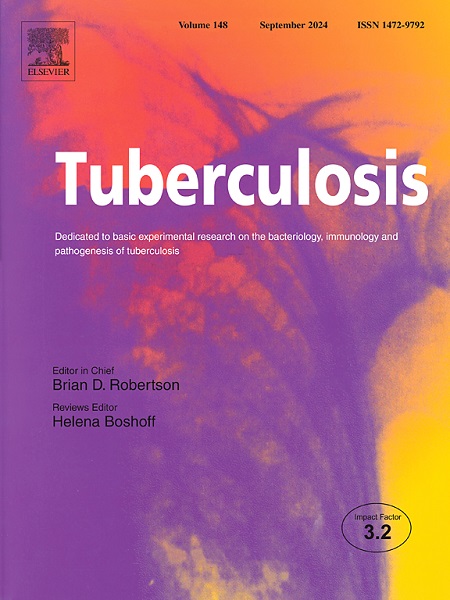Unraveling the role of the immune landscape in tuberculosis granuloma
IF 2.9
3区 医学
Q3 IMMUNOLOGY
引用次数: 0
Abstract
Despite significant advances in research over the past century, Tuberculosis (TB) remains a formidable global health concern. TB granulomas are organized structures composed of immune cells, that serve as the body's primary defense against the spread of Mycobacterium tuberculosis (Mtb). The immune landscape of TB granulomas involves a complex array of immune cells, including CD4+ and CD8+ T cells, B cells, NK cells, and others, which collectively influence the fate of the granuloma. B cells contribute to the formation of the granuloma's germinal center, while the functional state of T cells—particularly their ability to control infection—dictates whether the granuloma is controlling or proliferative. The intricate interplay between T cells and the dynamic microenvironment of the granuloma plays a pivotal role in determining the outcome of the infection. However, several aspects of the immunological basis of tuberculosis are still unknown. This review delves into the immunological landscape of TB granuloma, focusing on the dynamic cellular interplay within the granuloma and its profound influence on disease pathogenesis.

揭示免疫景观在结核肉芽肿中的作用
尽管过去一个世纪的研究取得了重大进展,但结核病仍然是一个令人生畏的全球卫生问题。结核肉芽肿是由免疫细胞组成的有组织结构,是人体抵御结核分枝杆菌(Mtb)传播的主要屏障。结核病肉芽肿的免疫景观涉及一系列复杂的免疫细胞,包括CD4+和CD8+ T细胞、B细胞、NK细胞等,它们共同影响肉芽肿的命运。B细胞有助于肉芽肿生发中心的形成,而T细胞的功能状态——尤其是它们控制感染的能力——决定了肉芽肿是控制性的还是增殖性的。T细胞和肉芽肿的动态微环境之间复杂的相互作用在决定感染的结果中起着关键作用。然而,结核病的免疫学基础的几个方面仍然是未知的。本文综述了结核病肉芽肿的免疫学景观,重点介绍了肉芽肿内的动态细胞相互作用及其对疾病发病机制的深远影响。
本文章由计算机程序翻译,如有差异,请以英文原文为准。
求助全文
约1分钟内获得全文
求助全文
来源期刊

Tuberculosis
医学-呼吸系统
CiteScore
4.60
自引率
3.10%
发文量
87
审稿时长
49 days
期刊介绍:
Tuberculosis is a speciality journal focusing on basic experimental research on tuberculosis, notably on bacteriological, immunological and pathogenesis aspects of the disease. The journal publishes original research and reviews on the host response and immunology of tuberculosis and the molecular biology, genetics and physiology of the organism, however discourages submissions with a meta-analytical focus (for example, articles based on searches of published articles in public electronic databases, especially where there is lack of evidence of the personal involvement of authors in the generation of such material). We do not publish Clinical Case-Studies.
Areas on which submissions are welcomed include:
-Clinical TrialsDiagnostics-
Antimicrobial resistance-
Immunology-
Leprosy-
Microbiology, including microbial physiology-
Molecular epidemiology-
Non-tuberculous Mycobacteria-
Pathogenesis-
Pathology-
Vaccine development.
This Journal does not accept case-reports.
The resurgence of interest in tuberculosis has accelerated the pace of relevant research and Tuberculosis has grown with it, as the only journal dedicated to experimental biomedical research in tuberculosis.
 求助内容:
求助内容: 应助结果提醒方式:
应助结果提醒方式:


